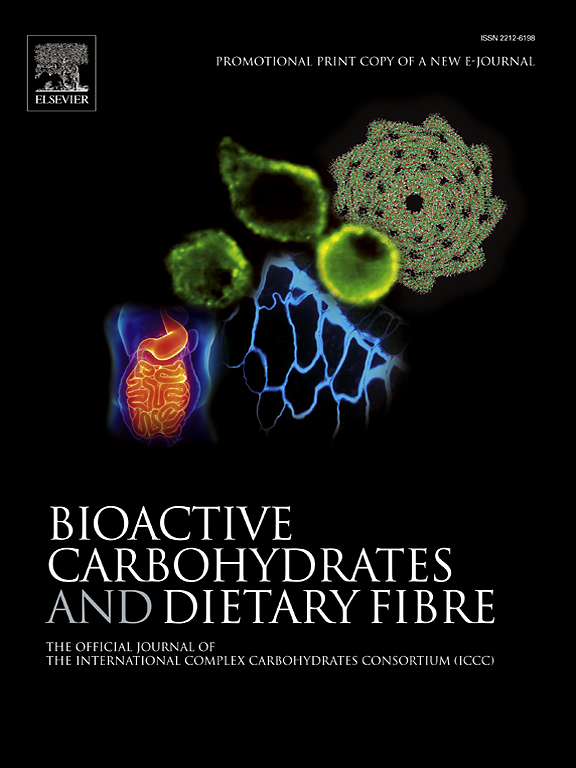Dietary bioactive compounds poly-β-hydroxybutyrate, mannan oligosaccharide, and inulin affected the growth performance, gut microbiota, and body composition of African catfish (Clarias gariepinus, Burchell, 1822) larvae
IF 3.6
引用次数: 0
Abstract
High mortality rates and sub-optimal growth performance during the early larval stage of African catfish (Clarias gariepinus) larviculture remain significant challenges, limiting its aquaculture in Ethiopia. In this study, the effects of three prebiotics, Mannan Oligosaccharide (MOS), Inulin, and Poly-β-hydroxybutyrate (PHB) on growth performance, survival, gut microbiota, and body composition of African catfish larvae were evaluated.
Results showed that PHB supplementation significantly enhanced survival rate (88.89 % ± 3.85 %), final weight (4.20 ± 1.128 g), final length (7.51 ± 0.406 cm), specific growth rate (4.08 ± 0.470 g/day), and daily weight gain (0.06 ± 0.0 g/day) compared to control and other prebiotic-treated groups. On the other hand, MOS and Inulin supplementation did not yield significant improvements in growth parameters compared to the control. Prebiotics supplementation did not affect whole-body proximate composition (P > 0.05). In terms of microbial composition, PHB (1.46×107±6.81×105 CFU/mL) and MOS (1.45×107±4.04×105 CFU/mL) showed significantly lower TBC. LAB abundance was highest in MOS (3.00×102±1.73×102CFU/mL) and PHB (2.65×102±1.53 ×102 CFU/mL) supplemented groups, whereas Inulin supplementation favored lower LAB growth of 3.00×102±1.73×102 CFU/mL. There was no LAB growth in the intestines of the control group in this experiment. Total Bacillus count was highest in the PHB (2.67×104±2.52×102 CFU/mL) supplemented groups of fish, followed by Inulin (1.83×104±5.29×102 CFU/mL) and MOS (1.48×104±2.52×102 CFU/mL). In contrast, the control (1.28×104±3.06×102 CFU/mL) group exhibited the lowest presence of Bacillus bacteria. In conclusion, dietary prebiotic supplementation influenced growth performance, survival, and gut microbiota in African catfish larvae, with PHB demonstrating the most substantial benefits.
饲粮中添加生物活性化合物聚β-羟基丁酸酯、甘露聚糖低聚糖和菊粉对非洲鲶鱼(Clarias gariepinus, Burchell, 1822)幼虫的生长性能、肠道微生物群和体组成均有影响
非洲鲶鱼(Clarias gariepinus)幼虫养殖早期的高死亡率和不理想的生长性能仍然是重大挑战,限制了其在埃塞俄比亚的水产养殖。本试验研究了甘露寡糖(MOS)、菊粉(Inulin)和聚β-羟基丁酸(PHB) 3种益生元对非洲鲶鱼幼鱼生长性能、存活率、肠道菌群和体组成的影响。结果表明,与对照组和其他益生元组相比,添加PHB显著提高了成活率(88.89%±3.85%)、末重(4.20±1.128 g)、末长(7.51±0.406 cm)、特定生长率(4.08±0.470 g/d)和日增重(0.06±0.0 g/d)。另一方面,与对照组相比,添加MOS和菊粉没有产生显著的生长参数改善。补充益生元不影响全身近似成分(P > 0.05)。微生物组成方面,PHB (1.46×107±6.81×105 CFU/mL)和MOS (1.45×107±4.04×105 CFU/mL) TBC显著降低。添加MOS组(3.00×102±1.73×102CFU/mL)和PHB组(2.65×102±1.53 ×102CFU/mL)的LAB丰度最高,而添加菊粉组(3.00×102±1.73×102CFU/mL)的LAB丰度较低。本试验对照组肠道内未见乳酸菌生长。添加PHB组的芽孢杆菌总数最高(2.67×104±2.52×102 CFU/mL),其次是菊粉(1.83×104±5.29×102 CFU/mL)和MOS (1.48×104±2.52×102 CFU/mL)。相比之下,对照组(1.28×104±3.06×102 CFU/mL)中芽孢杆菌的含量最低。综上所述,饲料中添加益生元影响了非洲鲶鱼幼虫的生长性能、存活率和肠道微生物群,其中PHB表现出最显著的益处。
本文章由计算机程序翻译,如有差异,请以英文原文为准。
求助全文
约1分钟内获得全文
求助全文
来源期刊

Bioactive Carbohydrates and Dietary Fibre
Agricultural and Biological Sciences-Food Science
CiteScore
6.00
自引率
0.00%
发文量
38
期刊介绍:
 求助内容:
求助内容: 应助结果提醒方式:
应助结果提醒方式:


